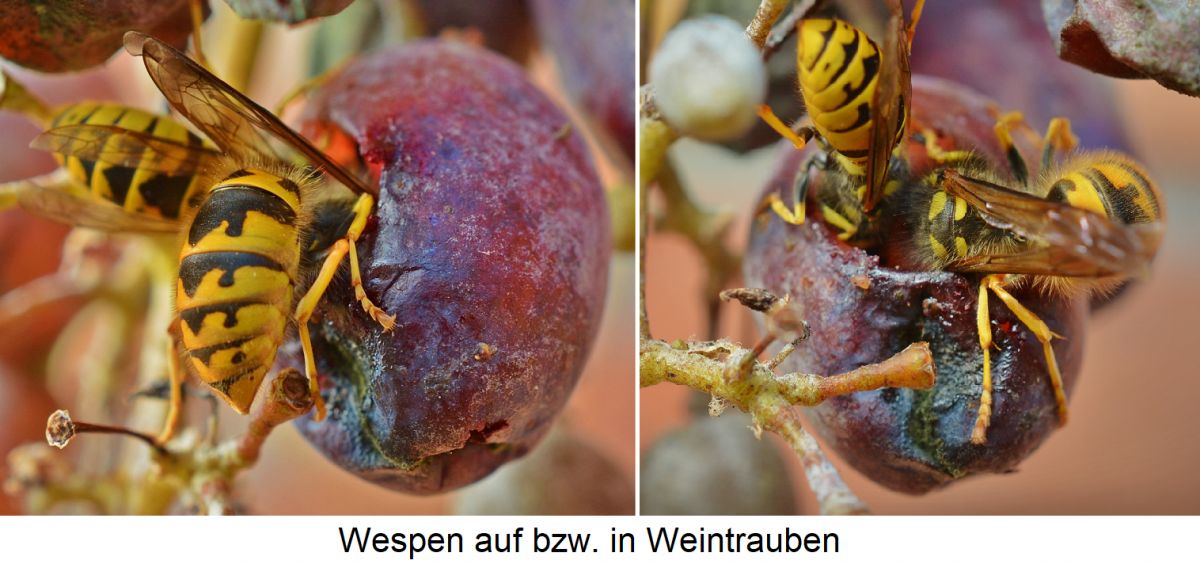Large Hymenoptera family with more than 3,000 different species. In Central Europe, the German wasp (Paravespula germanica) and the common wasp (Paravespula vulgaris), as well as occasionally the red wasp (Paravespula rufa) and the hornet (Vespa crabro) are most common in vineyards. They overwinter as single, mated females. In spring, they chew up weathered wood and build honeycombs in which eggs are laid.

The wasps (mainly workers), which hatch after several larval moults, sting the grapes and eat the contents, leaving only the berry skin (see picture). Bees (which can only ingest liquid food) are the beneficiaries of berries stung by wasps. In contrast to the wasps, they cannot bite open the grape skin, but can only press on it with their heads at fine hairline cracks, where they then suck up the escaping sweet juice. As secondary damage, the grapes are attacked by fungi or bacteria, which can lead to vinegar and green rot. Wasps are controlled by traps (narrow-necked bottles with bait = beer and berry juice). In contrast, the insect species gall wasps and ichneumon wasps are beneficial insects in viticulture. See also under vine enemies.
Voices of our members

The glossary is a monumental achievement and one of the most important contributions to wine knowledge. Of all the encyclopaedias I use on the subject of wine, it is by far the most important. That was the case ten years ago and it hasn't changed since.
Andreas Essl
Autor, Modena